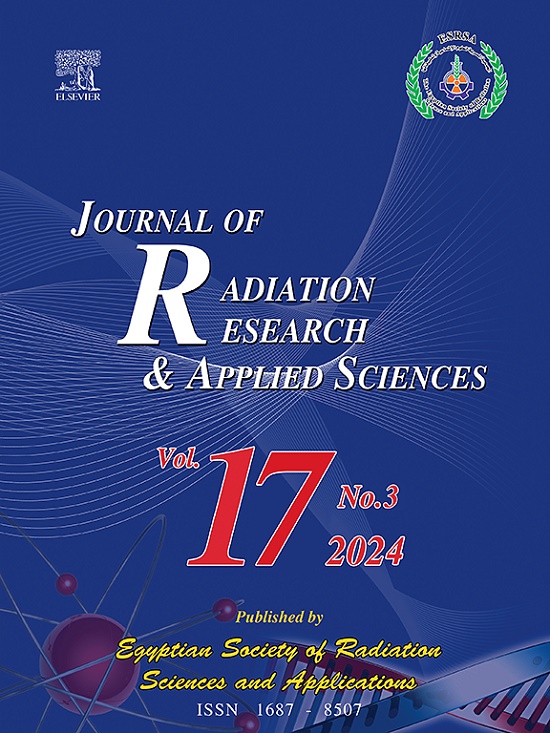用于医学图像分割的阶梯边缘和边缘损失增强变压器
IF 2.5
4区 综合性期刊
Q2 MULTIDISCIPLINARY SCIENCES
Journal of Radiation Research and Applied Sciences
Pub Date : 2025-06-12
DOI:10.1016/j.jrras.2025.101667
引用次数: 0
摘要
目的膝关节骨关节炎(KOA)是最常见的退行性关节疾病,严重影响患者的生活质量。目前,使用超声图像进行KOA评估依赖于复杂、耗时的人工测量。开发自动、准确的医学图像分割方法对临床诊断至关重要。然而,由于医学图像存在边界模糊、形状不规则等问题,现有方法的边缘精度较差,且存在形态学差异。为了解决这些问题,我们提出了IELSEMT模型。该模型提出了一个阶跃边缘模块,在训练时将其纳入全局分支和局部分支。此外,集成步进边缘模块后,增强了网络的边缘特征提取能力。在网络的反向传播阶段,我们提出了一种包含边缘损失项的加权损失函数,特别是使用交叉熵和平均绝对误差的加权和作为网络的损失函数,减少了网络分割结果中的边缘区域误差。结果与卷积基线相比,IELSEMT模型将F1_Score提高了约5%,IoU提高了15%。与Med基线模型相比,IoU和F1评分高出约4%。此外,通过在反向传播阶段引入边损失项,提高了网络的训练速度。IELSEMT模型可以快速定位分割对象的边缘,训练速度更快,收敛速度是MedT模型的两倍。本文提出的IELSEMT模型融合了全尺寸和边缘检测的概念,在解码阶段引入边缘信息,实现更准确的边缘信息获取,以更清晰、更精确的边缘提高分割精度。与其他基于transformer的模型不同,我们提出的方法不需要在大规模数据集上进行预训练。最后,我们在膝关节超声数据集上进行了实验,其中IELSEMT表现出优于CNN和其他相关的基于transformer的架构的性能。本文章由计算机程序翻译,如有差异,请以英文原文为准。
Step edge and edge loss enhanced Transformer for medical image segmentation
Objective
Knee osteoarthritis (KOA) is the most common degenerative joint disease, significantly impacting patients' quality of life. Currently, KOA assessments using ultrasound images rely on complex, time-consuming manual measurements. Developing automatic, accurate medical image segmentation methods for clinical diagnosis is crucial. However, due to challenges like blurred boundaries and irregular shapes in medical images, existing methods show poor edge accuracy and morphological differences.
Methods
To address these issues, we propose IELSEMT model. The model proposes a step edge module, incorporating it into both global and local branches during training. Additionally, after integrating the step edge module, the network's edge feature extraction capability is enhanced. During the network's backpropagation phase, we propose a weighted loss function that incorporates edge loss terms, specifically using the weighted sum of cross-entropy and mean absolute error as the network's loss function, reducing edge region errors in network segmentation results.
Results
Compared to the convolutional baseline, the IELSEMT model improves F1_Score by approximately 5 % and IoU by 15 %. Compared to the Med baseline model, IoU and F1 Score are about 4 % higher. Additionally, by incorporating edge loss terms during the backpropagation phase, the network training speed is enhanced. The IELSEMT model can quickly locate segmentation object edges and trains faster, achieving a convergence speed twice that of the MedT model.
Conclusion
The IELSEMT model proposed in this paper incorporates full-scale and edge detection concepts, introducing edge information into the decoding phase to achieve more accurate edge information acquisition, improving segmentation accuracy with clearer and more precise edges. Unlike other Transformer-based models, our proposed method does not require pre-training on large-scale datasets. Finally, we conducted experiments on knee joint ultrasound datasets, where IELSEMT demonstrated superior performance over both CNN and other related Transformer-based architectures.
求助全文
通过发布文献求助,成功后即可免费获取论文全文。
去求助
来源期刊

Journal of Radiation Research and Applied Sciences
MULTIDISCIPLINARY SCIENCES-
自引率
5.90%
发文量
130
审稿时长
16 weeks
期刊介绍:
Journal of Radiation Research and Applied Sciences provides a high quality medium for the publication of substantial, original and scientific and technological papers on the development and applications of nuclear, radiation and isotopes in biology, medicine, drugs, biochemistry, microbiology, agriculture, entomology, food technology, chemistry, physics, solid states, engineering, environmental and applied sciences.
 求助内容:
求助内容: 应助结果提醒方式:
应助结果提醒方式:


